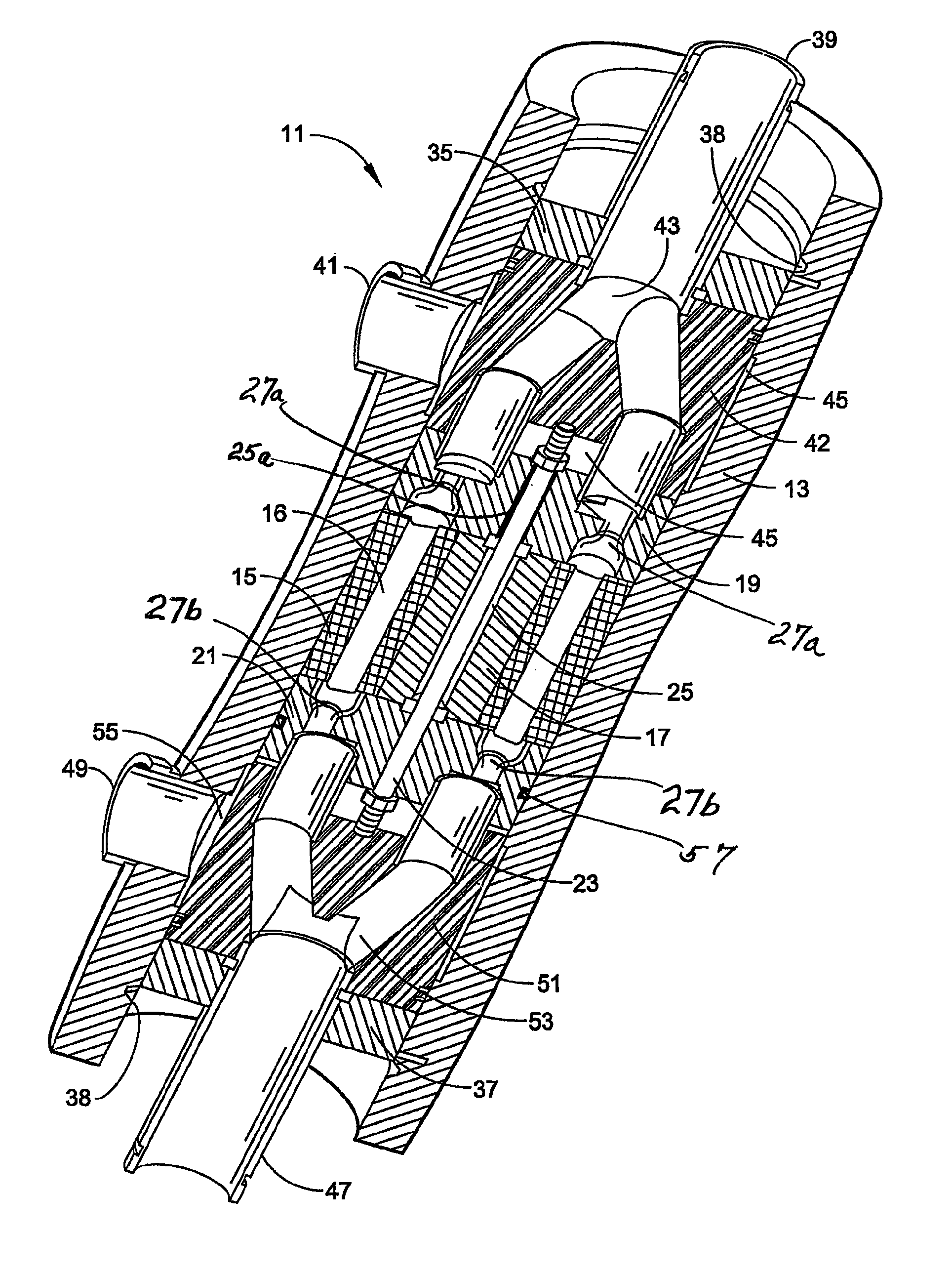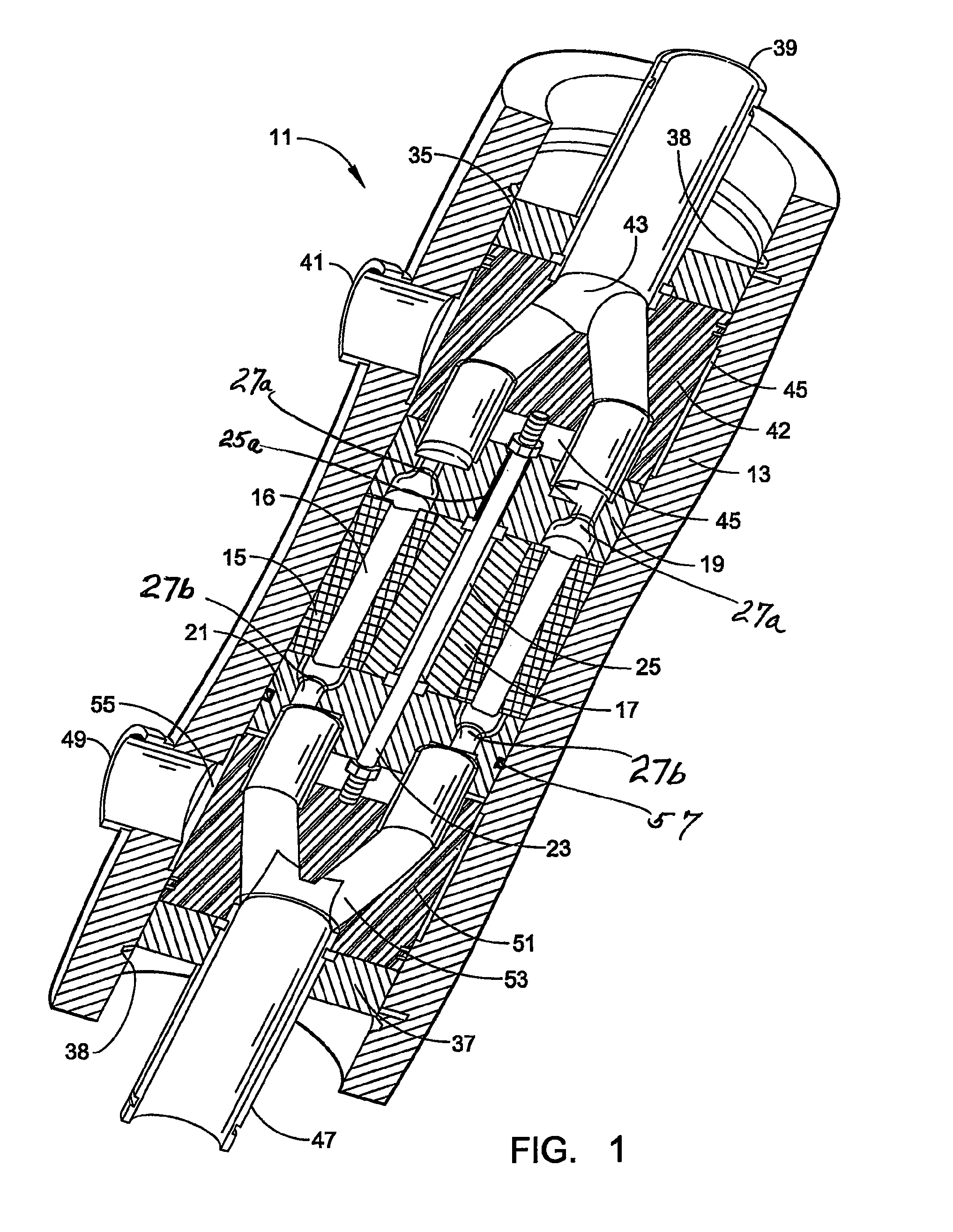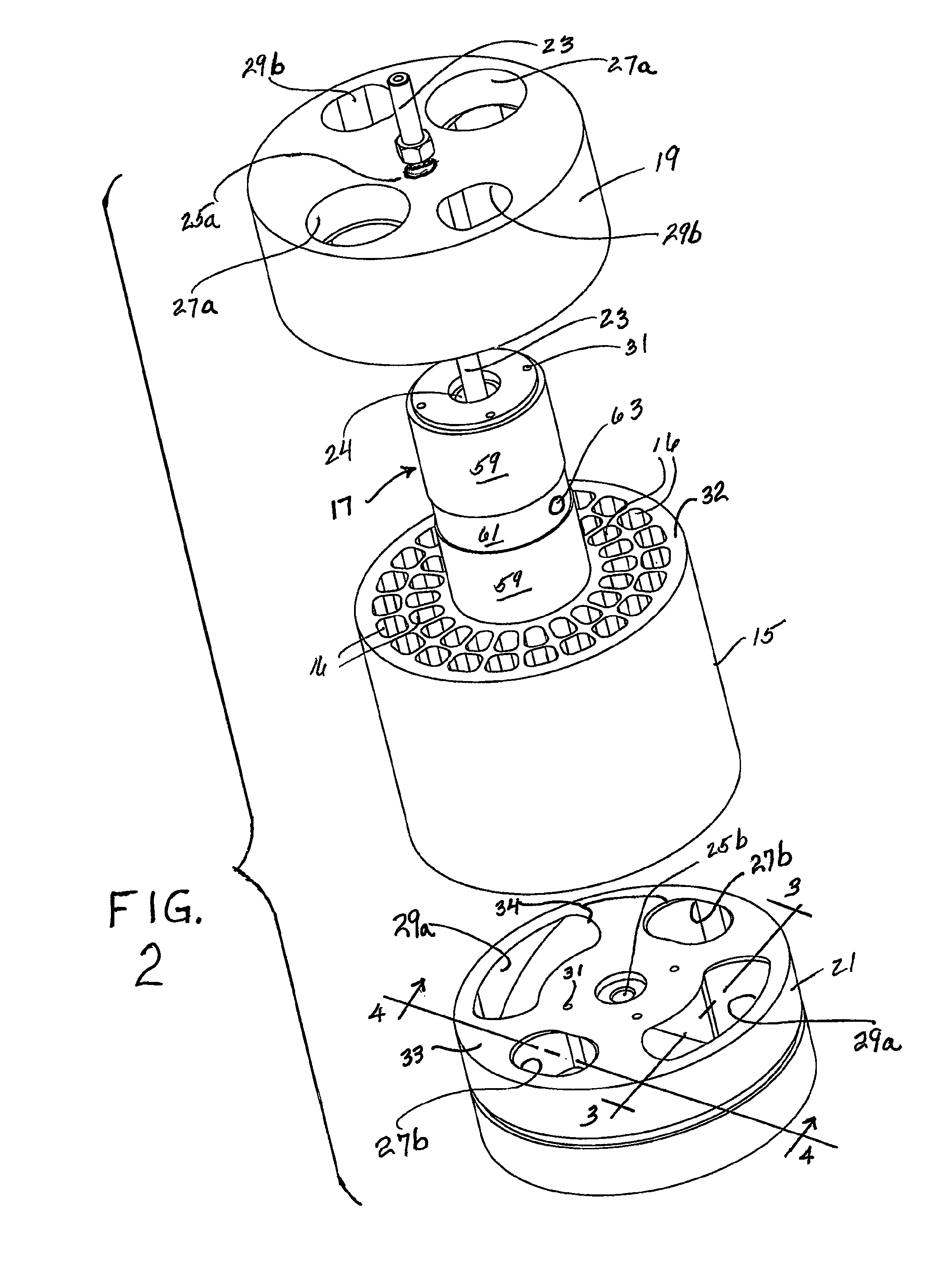Rotary pressure transfer device with improved flow
a technology of pressure transfer device and flow rate, which is applied in the direction of positive displacement liquid engine, piston pump, membrane, etc., can solve the problems of reducing efficiency, reducing device efficiency, and reducing device efficiency, so as to protect against substantial fluctuations in the rate of feed flow and minimize liquid mixing.
- Summary
- Abstract
- Description
- Claims
- Application Information
AI Technical Summary
Benefits of technology
Problems solved by technology
Method used
Image
Examples
Embodiment Construction
[0027]It has now been found that it is practical to employ end covers with oblique ramps only on the high-pressure side. As a result, the entry of high-pressure liquid drives rotor motion while the entry of low-pressure liquid has no effect on rotor motion. One result of such an arrangement is an increase in the flow rate of low-pressure liquid, which can be adjusted to substantially flush the rotor in each fill, e.g. by significantly displacing brine and replacing it with relatively low-salinity seawater when employed in a desalination operation, without changing the rotor speed. Generally, in a reverse osmosis desalination system, the flow rate of the high pressure brine being delivered to the pressure transfer device will be substantially constant, i.e., generally steady and without significant variation. However, the flow rate of the low pressure seawater inflow may occasionally spike upwards which might momentarily change rotor speed where both flows are being used to power the...
PUM
 Login to View More
Login to View More Abstract
Description
Claims
Application Information
 Login to View More
Login to View More - R&D
- Intellectual Property
- Life Sciences
- Materials
- Tech Scout
- Unparalleled Data Quality
- Higher Quality Content
- 60% Fewer Hallucinations
Browse by: Latest US Patents, China's latest patents, Technical Efficacy Thesaurus, Application Domain, Technology Topic, Popular Technical Reports.
© 2025 PatSnap. All rights reserved.Legal|Privacy policy|Modern Slavery Act Transparency Statement|Sitemap|About US| Contact US: help@patsnap.com



